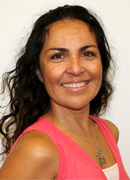Behaviour
Caring for babies
Bottle feeding
Changing a nappy
Cleaning and sterilising bottles
Daily cleaning tasks
Helping new children settle in
Preparing for a nappy change
Sleep patterns – babies
Sleep routines – babies
Toilet training
Caring for children
Allowing time for practice
Dressing/undressing
Mealtimes
Nappy change
Packing away/caring for the environment
Sleep/rest time
Toileting
Common self-help milestones
Tips for sleep and rest time
Self image
Communication
Body language
Limits and guidelines
Ways children communicate
Greeting children and families
Modelling appropriate communication
Questioning
Verbal and non–verbal communication
Acknowledging children's feelings
Listening attentively
Communicating with Aboriginal and Torres Strait Islander parents/carers
Development
Allowing time for practice
Dressing/undressing
Mealtimes
Nappy change
Packing away/caring for the environment
Sleep/rest time
Toileting
Common self-help milestones
Creative development
Language development
Modelling positive relationships
Physical development
Sharing and taking turns
Sleep patterns – babies
Sleep routines – babies
Encourage independent problem solving
Fundamental movement skills
Health, hygiene and safety
Coping with stress
Correct manual handling principles
Daily cleaning tasks
Hand washing
Hand washing poster
Manual handling overview
Toilet training
Safety checklist
Learning experiences and play
Environmentally friendly learning experiences
Learning experiences for different development areas
Creative resource materials
Arranging the environment to facilitate learning and pleasure
Indoors and outdoor areas
Creating a positive physical environment
Legal and ethical issues
Child abuse case studies
How do I recognise when a child or young person is at risk?
Tips on dealing with disclosures
Observation methods
Arranging Experiences (PDF 351Kb)
Recording observations
Rules for making observations
What you can learn from observations
Programming
Children’s interests, strengths, needs and skills
Extending the children’s interest in dinosaurs
Objective observation
Planning an OSHC environment
Behavior management plan
Planning enjoyable experiences
Planning experiences for 0 - 2 years age group
Planning experiences for 2 - 3 years age group
Planning experiences for 3 - 5 years age group
Child abuse case studies
It is very sad that children are abused. As a child care worker you're in a position to be able to help some of them by offering support and safety in your child care centre.
Below are a number of the Cybertots staff sharing their experiences about children who have been abused. Click on each of the staff members below to see what they have to say.
Patricia

I remember a few years ago, I was working at a centre in a rural area where many of the young children in the community attended long day care. It was the kind of country town where the families all knew each other – very close-knit. One child, a six-year-old boy named Darren, was always very quiet and shy – particularly around the older boys.
I had known Darren and his family for quite a while – two of his older brothers had attended the centre when they were little. I first met Darren when he was three and his mum returned to full-time work, putting Darren into the centre. I used to wonder why Darren wasn't like the other boys, who were quite boisterous and outgoing, although I remembered that when he was younger he wasn't so quiet and shy.
I later found out that one of Darren's relatives used to look after him quite often, and apparently she used to be quite nasty – calling him names and teasing him constantly. I heard a story that she would lock Darren in the laundry cupboard in total darkness until she was ready to let him out. Once I knew about this situation, I could understand why Darren wasn't as happy and playful as the other children. Apparently the abuse was never reported because it was a member of the family.
Nicole

Before you joined us we had a young girl here at Cybertots – Claire. Ever since she was only 5 months old, Claire had been attending day care centres, as her mother was a single parent who worked full-time. Claire was a lovely little girl, but I used to worry about her well being.
Sometimes Claire would arrive at Cybertots in a terrible mess – quite often she would still be wearing her night nappy, and her clothing would be unclean. Her mum was always in a big rush to get to work, and sometimes she would hardly stop to give Claire a kiss goodbye. At least twice a week, Claire's mum would be 10 – 15 minutes late collecting her, and she was always in a rush to get going, hardly acknowledging her daughter.
As Claire grew older, I realised that her mum's behaviour was not improving. In fact, as Claire became more able to look after herself once she reached 3 years of age it was obvious that the child wasn't being well cared for. I could tell that her hair was hardly ever washed, and her clothes were never clean. When she was five years old, Claire told me that her mum left her alone at home, or left her to play alone in her bedroom while she entertained her friends. It was quite sad, because Claire was such a great little girl with a lot of love to give.
Sara

I'll never forget a child that I met at a family day care centre when I first started in the child care industry. Graeme was one of those children that capture your heart the first time you meet them – there was something about him that was different to the other children. He responded really well to the lady who ran the family day care, Christine, but no matter what I tried, he would not let me get close to him in any way – physically or emotionally.
One day I asked Christine about Graeme, and I almost wish that I never did. She told me how Graeme had been sexually abused as a young baby by one of his uncles who used to baby-sit him. It started when Graeme was a baby, and went on for nearly 3 years before anyone found out.
Thankfully, the family pressed charges and the guy ended up in jail, but Graeme is still coming to terms with the years of abuse that he suffered – and this is years later, Graeme is half-way through primary school now. It just goes to show you how awful child abuse can be.
Pierre

I used to work in a crèche that was part of a big shopping centre complex in the suburbs. Children used to come and go all the time, but we had a few regulars. One child that I remember very clearly was Carl, who used to come to crèche about 3 times a week while his mum was shopping.
One day we had been doing some finger painting with the children, and we had got quite messy. Carl had paint all over his t-shirt, and some had soaked through to his skin. I thought I had better get him cleaned up before his mum came back to collect him. As I was helping Carl take off his t-shirt, I noticed a small round red mark on his chest. At that point Carl mentioned "My mum did that."
I had to remember what to do when a child discloses information to you. Even though I was very shocked at what Carl had said, I tried not to show my reaction so that Carl would not feel uncomfortable. I didn't ask him any questions about it. I just said "Thank you for telling me" and that it wasn't his fault.
Later that day I told the crèche supervisor and together we wrote a report stating precisely what happened and what was said. We were careful not to mention anything to Carl's mum when she collected him. I had to ensure that I kept the information confidential. The only people I told about it were my supervisor and another staff member who also worked closely with Carl. My supervisor then took matters further by contacting the child protection agency.
I left the crèche soon after that, but I sometimes think about how Carl might be going these days – he would be nearly 10 years old now.